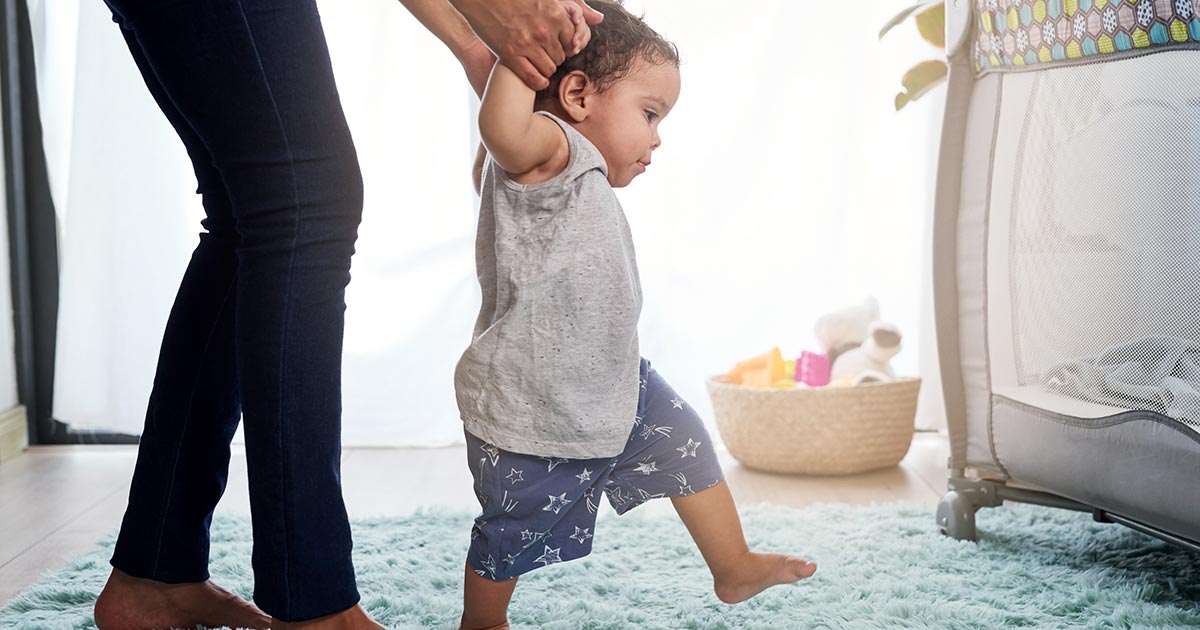
Advice to improve your movement, fitness, and overall health from the #1 in orthopedics in the U.S.
Are Flat Feet and Toe Walking Common in Young Kids?
Is the way your child sits, stands or walks worrying you? HSS pediatric orthopedic surgeon Emily Dodwell shares her research findings highlighting what’s normal and what’s not.
Advice to improve your movement, fitness, and overall health from the #1 in orthopedics in the U.S.

According to HSS pediatric orthopedic surgeon Emily R. Dodwell, MD, MPH, FRCSC, young children’s leg and foot alignment and gait can be quite varied. Often, the variations seen in childhood are normal and will improve with time. Dr. Dodwell recently published a paper that busted some myths about leg and foot alignment, walking and sitting positions. She answers some questions about her findings below.
Why did you decide to do this research?
Many children are brought in to see us for concerns over alignment or how the child sits, walks or runs. We decided to pull together studies that demonstrate how these variations in childhood improve over time, as well as studies that show whether any complications can arise from these variations and whether treatments are required.
Let’s start with flexible flat feet. What does this mean, and what causes it?
Many times per week I see patients with flexible flat feet. Often the parent or caregiver is worried that he or she may have problems later in life.
Most young children have flat feet. This is because their ligaments, the “ropes” that hold the foot bones together, are still very elastic and flexible. When the child is in a standing position, the arches collapse under their body weight. When they sit and their body weight is no longer on their feet, the arches reappear. As long as the child has no pain, flexible flat feet are part of normal development and no intervention is needed. Over time, the ligaments of the foot typically become less elastic and grow strong enough to withstand the weight of the body, usually around age 10.
What about standing or walking with the toes in or out?
In-toeing, sometimes called walking “pigeon-toed,” can occur for a few reasons. It may be due to looseness in the hip joints allowing increased inward movement, an inward twist in the thigh or shin bones or an inward curving of the foot. Out-toeing, or walking “like a duck,” can also be caused by loose hip joints or by an outward twist in the thigh or shin bones.
When in-toeing or out-toeing are caused by excessive joint movement or a twist in the thigh or shin bone, the child shouldn’t have any pain and most likely doesn’t even notice. However, parents or grandparents may remember someone they knew growing up who was treated with leg braces for such an issue and may wonder if the child also needs braces. Although braces work for specific conditions such as foot deformities like clubfoot and metatarsus adductus, braces do not work for twists in the thigh and shin bones.
Fitting the child with braces or shoe wedges or performing any kind of massage or physical therapy has not been shown to affect rotation within the bones and is not needed. As the child grows older, most bones de-twist between the ages of ten and 12 and in turn the walking improves. In rare cases, children do not grow out of this problem and surgery may be required.
What is W-sitting, and why does it raise concerns?
W-sitting involves sitting on the floor with the knees bent and the feet splayed out on either side of the body. The legs make a W shape. Common myths about sitting this way, even among some medical providers, are that this position can cause hip problems, weaken the core muscles, lessen coordination and motor skills or even affect the arms in such a way that the child will have a harder time learning how to write.
We didn’t find studies linking W-sitting to any of these problems. Children who sit in this position do so because they have extra rotation in their thigh bones or extra flexibility in their hip joints. The position is comfortable for these children. The extra rotation goes away over the course of childhood. It’s not a position that’s comfortable for most adults. Children who sit this way do not need to be corrected, but it is reasonable to encourage variety, including sitting in other positions periodically, like sitting crisscross, sitting with their legs straight out in front of them or kneeling.
What is toe-walking and what should parents know about it?
Toe-walking involves walking on the toes or front of the feet without putting the heels on the ground. Most toe-walking is idiopathic, which means there is no known cause.
Many children toe-walk only some of the time, such as when the floor is cold, when they’re barefoot or when they get excited. Most children who walk this way are able to put their heels down when they’re reminded to do so.
In babies and toddlers, occasional toe-walking is extremely common and usually resolves on its own. When toe walking occurs without other symptoms in young children, nothing needs to be done right away. However, when it occurs in older children, or if there are any co-existing symptoms such as tight muscles or weakness or development delays, it’s important for the child to be evaluated for potential underlying causes such as cerebral palsy, muscular dystrophy or autism spectrum disorder. When idiopathic toe-walking is present in children five and older, it is less likely to go away on its own. Often the Achilles tendon is very tight and may need to be stretched out with casting or lengthened with a small surgery.
Although in-toeing, out-toeing, toe-walking, W sitting and flat feet can be normal parts of growth and development, often with no treatment necessary, parents should bring any concerns to their pediatrician. They also can schedule a visit with a pediatric orthopedic specialist to get the reassurance they need, or, in rare cases, treatment.
Published 7/8/2021


